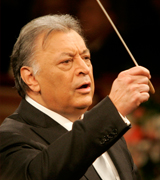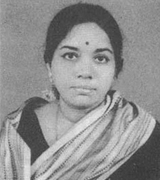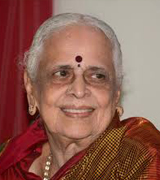Issue also has a Special Feature on Mandolin Shrinivas
COVER STORY
Zubin Mehta - To the baton born
MANOHAR PARNERKAR

Introduction:
In the early 1970s, I worked for a Mumbai-based private sector company where I had a Parsi boss, a man every bit as urbane, adorable, endearingly charming – and idiosyncratic – as they come. He was not just an aficionado, but a fanatically devoted votary of Western classical music. Now this was absolutely fine with me except that, while rightfully extolling the virtues of the sublime music of Bach, Beethoven and Mozart, he often tended to revel in running down Indian classical music. And at least on one occasion this otherwise perfectly liberal man made a most staggering statement – something to the effect that the one thing that seemed to him to unite the Indian cultural elite was its appalling ignorance of, and ill-concealed disdain for Western classical music. I then found the remark quite galling for two reasons.
SPECIAL FEATURE
U. Shrinivas - The wonder boy
SUJATHA VIJAYARAGHAVAN

The late night concert had commenced at the Music Academy and my mother Ananthalakshmi Sadagopan was hurrying to enter, when she ran into Madurai T.N. Seshagopalan at the lobby. After the greetings he held her back to tell her about a wonder boy who had played the mandolin earlier in the evening at another sabha. He was in a daze as he went on to describe the virtuosity, the imagination, the incredible control over the instrument, “This boy, not yet twelve, revealed vistas in Nalinakanti hitherto unknown! I just didn’t know what to do. I went up to him and offered him the ring I was wearing!” Seshagopalan was all starry eyed and excited at the new star that had arrived from nowhere in the musical firmament. It was the music season in Madras in December 1981.
Curious about the prodigy, my parents and I attended the next concert by U. Shrinivas. It was a miracle we witnessed. My father, who had first heard Flute Mali as a boy of twelve and had held him as the acme of Carnatic music, came to the immediate conclusion that Shrinivas was the reincarnation of Mali.
MAIN FEATURE
Twin souls on the concert stage
C.P. CHIKKANNA

With the passing away of R. Jayalakshmi, the leading performer of the dulcet voiced duo Radha-Jayalakshmi, the world of Carnatic music lost one of its finest exponents.
Born in an Iyengar family of music lovers, the cousins received their basic lessons in music in their childhood from Jayalakshmi’s mother R. Pattammal, an accomplished veena player and niece of veena vidwan Rangaswamy Iyengar. They were later trained by T.R. Balu, the principal disciple of G.N. Balasubramaniam, until his premature death in the early 1950s. GNB then guided them and laid the foundation for their successful music career of over four decades. He affectionately referred to them as his granddaughters.
The ‘Sisters’ successfully adopted GNB’s style of raga alapana, speedy rendering of songs, crisp niraval, sarvalaghu kalpana swaras, and clear cut pronunciation with due emphasis on the raga and sahitya bhava. GNB advised them to adopt the nagaswaram type of raga alapana and to reveal the identity of the raga in the beginning itself instead of keeping the audience perplexed. He insisted on their including a couple of rare ragas and apoorva kritis in their concerts and to put in effort by adequate planning, preparation and presentation to make each concert memorable for the listeners.
TRIBUTE
Sunda Mami
SRIRAM V

“Don’t you know Sunda?” asked Ravindra Narayanan, of the Ravi & Sridhar duo, students of T. Muktha both. It was a December music season several years ago. They had come from Tiruvannamalai to take in the season and we were spending time together in some canteen.
Those were the years when I was running sangeetham.com and looking for new stories for the website. And when they explained that Sunda aka A.R. Sundaram was a student of T. Brinda, my memory was jogged. Had not Indira Menon written a full page on her in her chapter on Brinda and Muktha in her book With Great Masters of Carnatic Music? I recollected that A.R. Sundaram was Brinda’s first student and that somewhere towards the end of her life, Brinda had acknowledged that Sunda remained faithful to her style.


